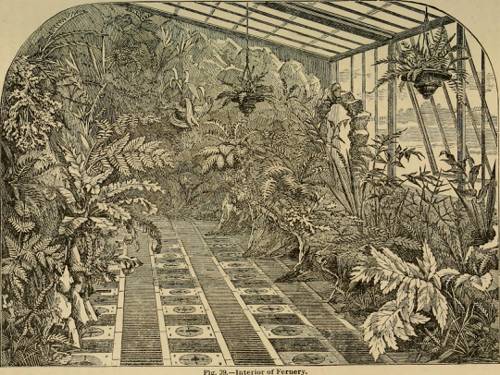
FAQ About Indoor Plant Thermal Regulation Devices

What are indoor plant thermal regulation devices?
Indoor plant thermal regulation devices are tools or equipment designed to help maintain optimal temperature conditions for indoor plants. These devices prevent extreme temperature variations that could potentially harm plants, ensuring a stable environment that promotes healthy growth.

Why is temperature regulation important for indoor plants?
Temperature regulation is crucial for indoor plants because extreme temperatures can cause stress, inhibit growth, or even kill plants. Proper temperature control helps maintain metabolic processes, supports photosynthesis, and ensures overall healthier plant growth.

How do these devices work to regulate temperature?
These devices work by monitoring and adjusting the temperature around the plants. Some use sensors to detect environmental changes and automatically activate heating or cooling elements. Others might provide insulation or passive temperature stabilization to maintain a consistent climate.

What types of thermal regulation devices are available for indoor plants?
There are several types of thermal regulation devices for indoor plants, including heat mats, cooling fans, thermostats, and thermometers. Each type has its own specific function, such as warming the soil, circulating air, or monitoring temperature levels.

Can heat mats be used for all indoor plants?
Heat mats are generally suitable for a wide variety of indoor plants, especially those that prefer warmer soil temperatures. However, it's important to check the specific temperature requirements for different plant species, as some may not need additional warmth or might require different settings.

What is the role of thermostats in plant temperature regulation?
Thermostats help maintain a specific temperature range around indoor plants by controlling heaters or other thermal devices. They automatically turn heating elements on or off to keep the environment consistently within the desired temperature range.

How do heaters specifically aid in keeping plants healthy?
Heaters can prevent the indoor environment from becoming too cold, especially in winter months or in areas with fluctuating temperatures. They ensure that plants remain in a temperature range that supports healthy growth and metabolic processes.

What are cooling fans used for in indoor plant care?
Cooling fans help reduce heat build-up around plants by promoting air circulation. This prevents the environment from becoming too hot, thereby protecting plants from heat stress and helping maintain optimal growth conditions.

Are there any risks associated with using thermal regulation devices?
While thermal regulation devices can significantly benefit plant growth, improper use can lead to risks such as overheating, dehydration, or uneven temperature distribution. It's essential to monitor these devices carefully and adjust settings according to the needs of the specific plants.

How can sensors help in thermal regulation for indoor plants?
Sensors play a critical role by providing real-time data on temperature changes in the plant environment. This information allows automatic adjustments by connected devices like heaters or coolers to maintain a stable thermal environment.

What is the difference between passive and active thermal regulation strategies?
Passive thermal regulation strategies involve methods that do not consume additional energy but adapt to environmental changes, like using insulation materials. Active strategies, on the other hand, involve powered devices such as heaters and fans that actively adjust the temperature to desired levels.

Is it possible to automate indoor plant thermal regulation?
Yes, automation is possible and increasingly common with the advent of smart technology. Many systems allow integration with smart home devices, which use programmable thermostats and sensors to maintain optimal temperature without manual intervention.

What are some signs of heat stress in indoor plants?
Signs of heat stress in indoor plants include wilting, yellowing leaves, dry leaf edges, leaf drop, and stunted growth. It's important to address these symptoms early by adjusting environmental conditions such as temperature and humidity.

Can indoor plants recover from heat stress once addressed?
Yes, indoor plants can often recover from heat stress with appropriate care. This involves removing damaged leaves, ensuring proper watering, and adjusting the temperature and humidity to optimal levels.

What temperature range is generally optimal for most indoor plants?
Most indoor plants thrive in a temperature range of 65-75°F (18-24°C) during the day and slightly cooler at night. However, it's crucial to consider species-specific requirements, as some plants may need warmer or cooler conditions.

How do insulation materials work in passive thermal regulation?
Insulation materials help maintain consistent temperatures by preventing heat loss or gain. This keeps the plant environment stable without needing powered equipment, making it a cost-effective and energy-efficient strategy.

Are humidifiers considered part of thermal regulation for indoor plants?
While humidifiers primarily control humidity levels, they indirectly influence the thermal environment, as humidity can affect temperature perception and plant responses. Therefore, they can be considered a component of a comprehensive environmental control strategy.

How can lighting influence thermal regulation for indoor plants?
Lighting can influence temperature, as many types of grow lights emit heat. It's essential to balance the light and heat output to ensure that plants receive adequate light without being exposed to excessive temperatures.

Can thermal regulation devices help with problems other than temperature?
While the primary function of these devices is to regulate temperature, they can also indirectly improve problems like humidity control and air circulation, which are crucial for overall plant health and reduce the risk of disease.

What are some energy-efficient options for thermal regulation?
Energy-efficient options include using programmable thermostats, insulation materials, and smart technologies that allow precise control with minimal energy consumption. Renewable energy sources like solar power can also be integrated to reduce the environmental footprint.
